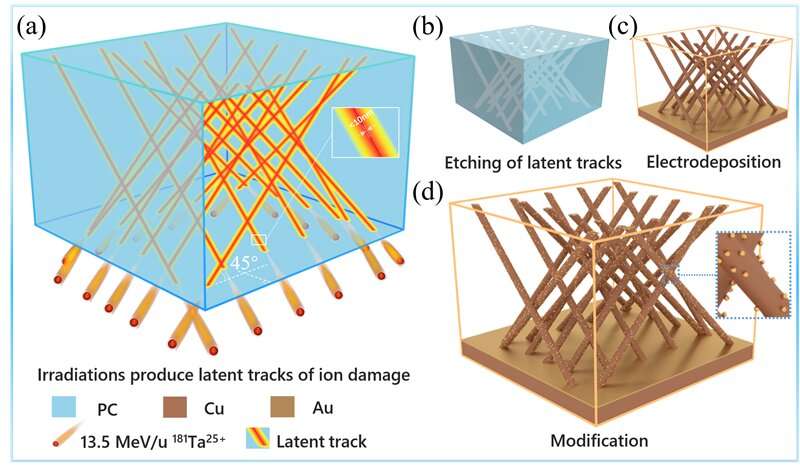This article has been reviewed according to Science X's editorial process and policies. Editors have highlighted the following attributes while ensuring the content's credibility:
fact-checked
peer-reviewed publication
trusted source
proofread
Researchers propose new host configuration for lithium anodes using nuclear track method

Researchers from the Materials Research Center of the Institute of Modern Physics (IMP) of the Chinese Academy of Sciences (CAS) and their collaborators from Beihang University have proposed a new 3D host configuration for lithium anodes using the nuclear track method. The study was published in Advanced Energy Materials.
Exploring ideal host configurations for high-performance battery anode materials is a frontier scientific issue. Lithium metal anodes are the most hopeful candidate material for next-generation energy storage batteries. However, problems such as the growth of dendrites during cycling have hindered the commercial application. Therefore, research on the lithium anode host configuration that combines high energy density, high power density and high cycling stability is of great importance to develop high-performance lithium-ion batteries.
Based on the Heavy Ion Research Facility in Lanzhou (HIRFL), the researchers have constructed a new 3D porous composite host structure using the nuclear track technology. The composite host structure consists of a 3D copper framework and uniformly distributed lithiophilic sites.
The composite 3D host-lithium anode exhibits an ultrahigh cycle life of more than 2000 hours and high-rate capabilities. It still exhibits stable cycling performance after 600 hours even at a high area capacity combined with a high current density.
Compared with that of other hosts constructed with identical materials, the electrochemical performance of the porous composite host structure in this study has been significantly improved. Researchers found that the high-mechanical strength, high-porosity and low-tortuosity of this structure are the main factors for the enhanced battery performance.
This study is of great importance to the exploration of high-performance anode materials, providing a possible solution to the key problems of lithium metal anodes.
More information: Xiaoxia Zhu et al, High‐Energy‐Heavy‐Ion Engineering Low‐Tortuosity and High‐Porosity 3D Metallic Electrodes for Long‐Life Lithium Anodes, Advanced Energy Materials (2023). DOI: 10.1002/aenm.202300129


















